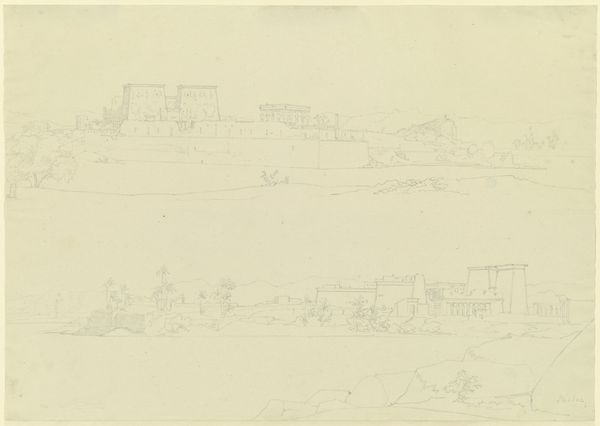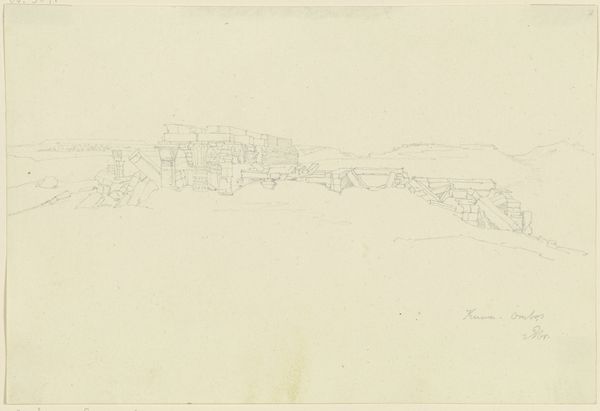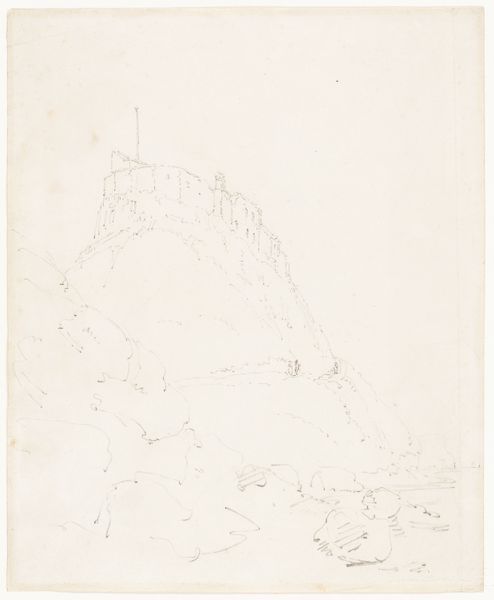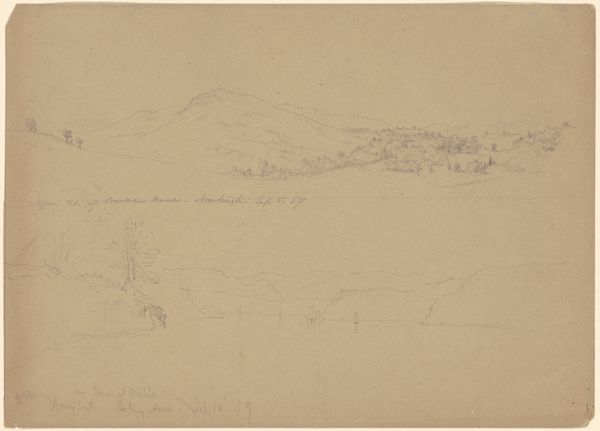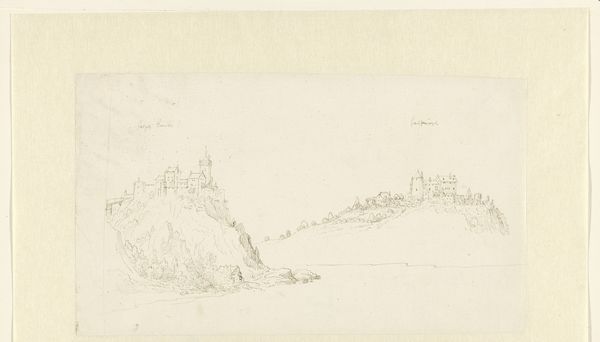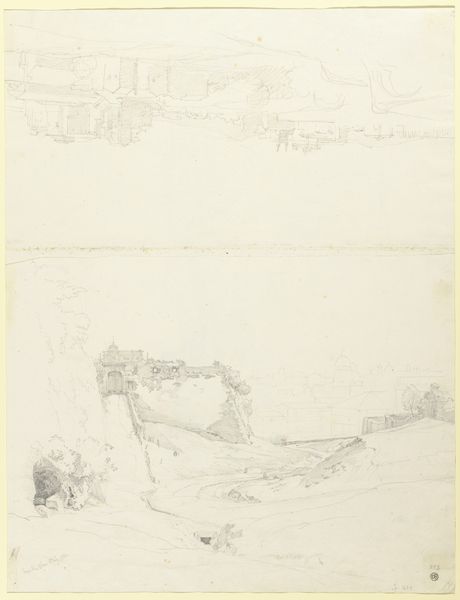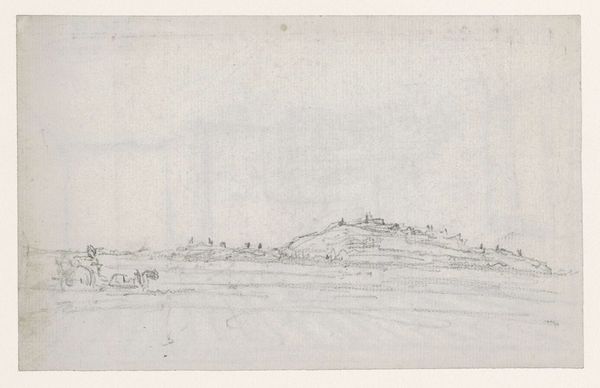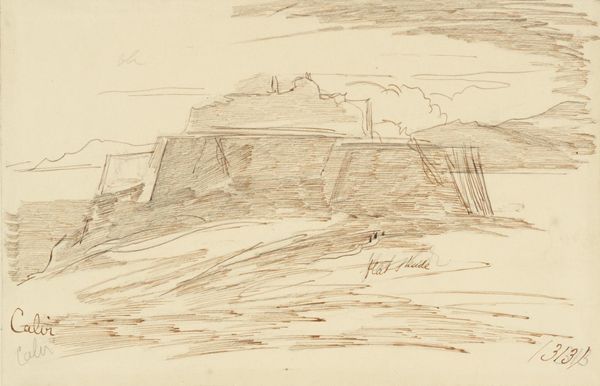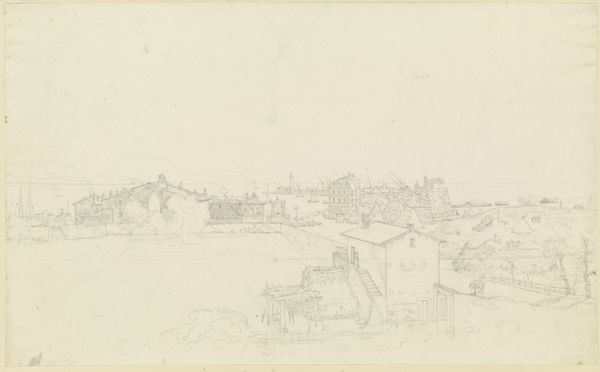
drawing, pencil
#
drawing
#
neoclacissism
#
landscape
#
pencil
#
realism
Dimensions: 206 mm (height) x 269 mm (width) (bladmaal)
Curator: Martinus Rørbye’s 1836 pencil drawing, “Udsigt mod Akropolis”, offers us a delicate rendering of the Acropolis as viewed from afar. The artwork is currently held at the SMK, Statens Museum for Kunst. Editor: There’s an almost melancholic serenity to this drawing. It's incredibly sparse and light, giving the ruins an ethereal quality that hints at both grandeur and inevitable decay. Curator: I’m struck by the stark geometry of the Parthenon atop the hill—the clean lines of the architecture contrasting with the sloping land, showcasing Rørbye’s interest in Neoclassicism and Realism. The drawing beautifully exemplifies a mastery of perspective, achieved with a bare minimum of lines. Editor: But even those spare lines speak volumes, don’t they? The way the Acropolis is centered emphasizes its role as the birthplace of democracy and Western philosophy, things often inaccessible for some and flourished under systemic inequalities. There’s a weight to seeing that history laid bare in a simple drawing. Curator: Certainly, the work encourages us to consider its context in the history of European landscape art. The use of a monochrome palette enhances the architectural forms. It serves almost like an ode to the timelessness of classical structures in the pencil strokes themselves. Editor: Yes, and it makes me think about whose stories get preserved in these classical forms, literally sketched here. The fact that it’s a distant view reinforces a certain detached observation, maybe echoing the colonial gaze through which much of this history was and continues to be interpreted. Curator: It is intriguing how the bareness amplifies attention to detail, demanding an assessment of tonal balances and spatial interrelationships. Rørbye is inviting us to decipher meaning through pure form. Editor: In looking at Rørbye's gaze, I find myself considering who we exclude from narratives about heritage when we immortalize landmarks and histories through art. It invites reflection on how the dominant cultural narratives have influenced representations of these sites and communities tied to these very histories. Curator: A brilliant observation. This work remains a delicate encapsulation of form and, perhaps, a historical prompt too. Editor: Indeed, its quiet power lies in revealing how much history a simple scene can quietly hold.
Comments
No comments
Be the first to comment and join the conversation on the ultimate creative platform.
